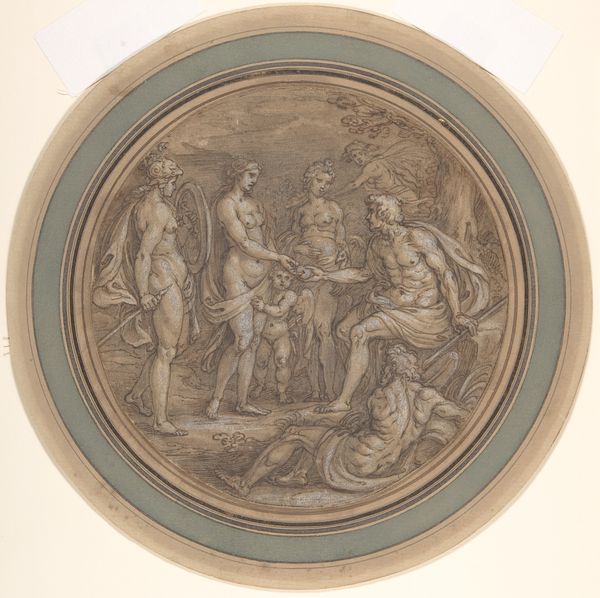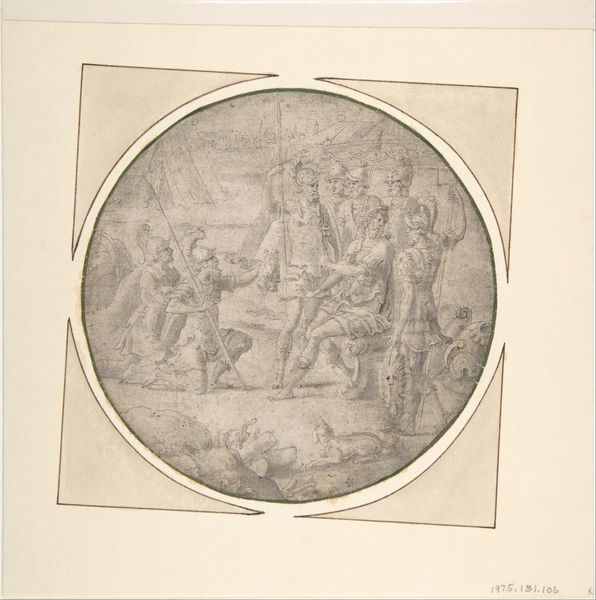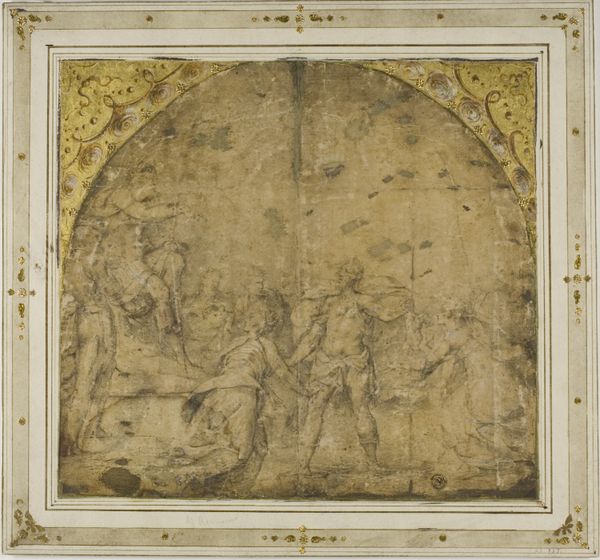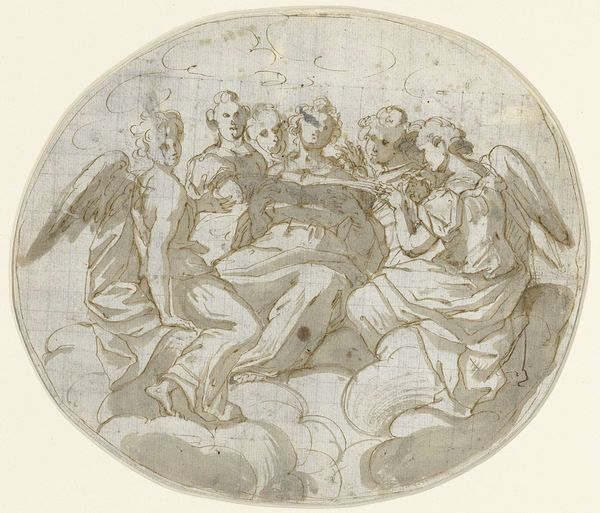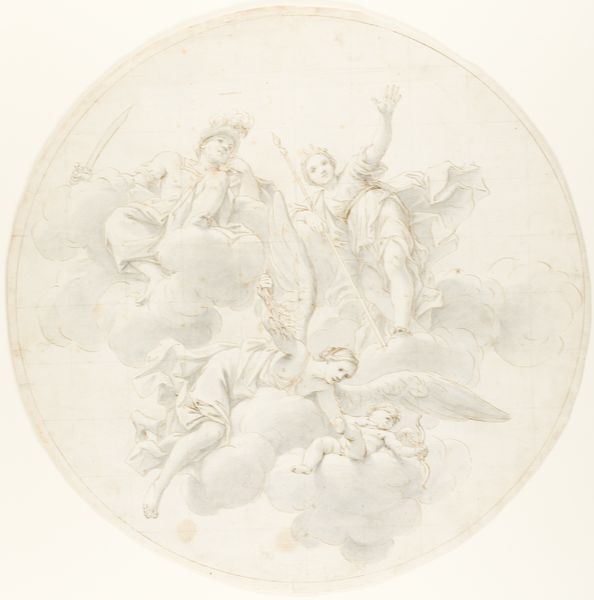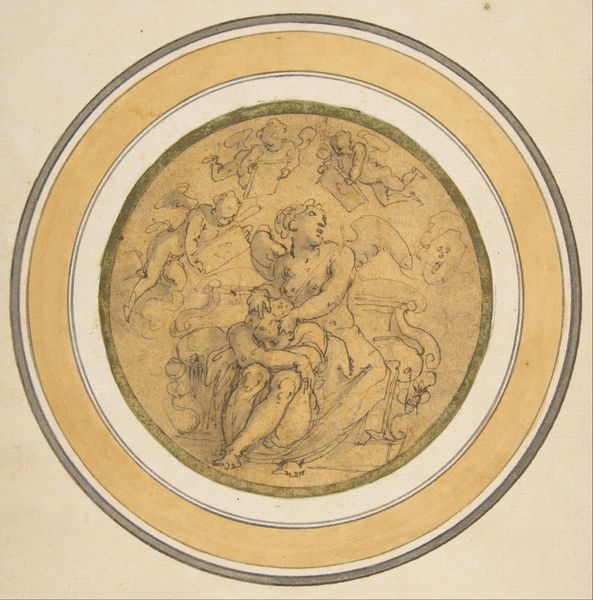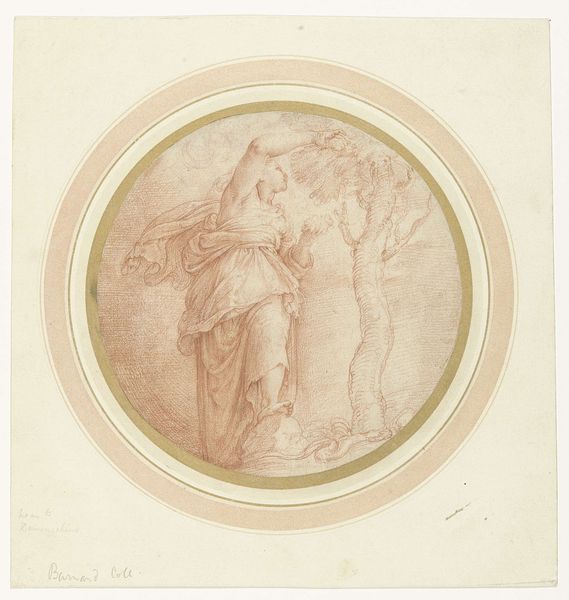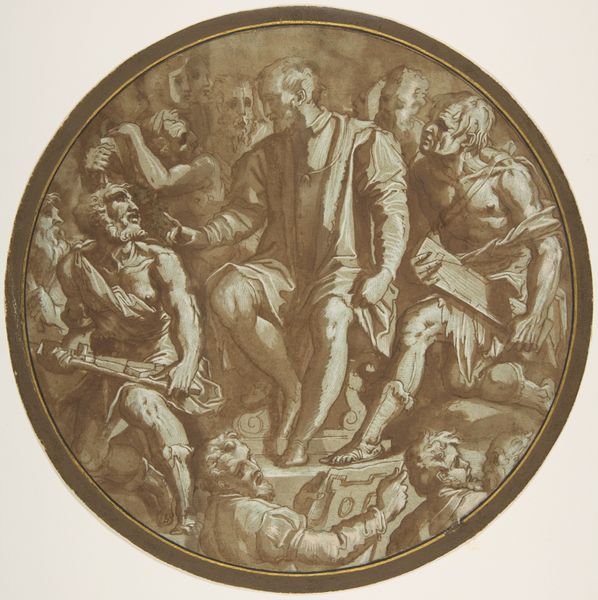
Allegorical Figures Representing Virtue and Abundance 1760
0:00
0:00
drawing, tempera, plein-air, oil-paint
#
portrait
#
drawing
#
allegory
#
baroque
#
tempera
#
plein-air
#
oil-paint
#
sculpture
#
charcoal drawing
#
figuration
#
intimism
#
history-painting
Dimensions: Diameter 114 in. (289.6 cm)
Copyright: Public Domain
Editor: Here we have Giovanni Battista Tiepolo's "Allegorical Figures Representing Virtue and Abundance" from 1760. It's rendered in oil paint, tempera and maybe charcoal. I'm immediately struck by its classical feel, almost like a monochrome sculpture come to life. What's your take on it? Curator: Well, considering Tiepolo’s historical context, think about the materials themselves. Oil paint, tempera, charcoal: these were not just mediums but commodities, produced and consumed within a complex system of patronage and artistic labor. Look at the smooth blending and the precision of the figures. What kind of workshop support did it require to create such illusion? Editor: That's a great point! I was focusing on the figures themselves – Virtue, Abundance. I was thinking more of theme, now I’m questioning where the paints come from, who grinds and mixes, who prepped the surface. How does thinking about the materials change our view? Curator: It shifts the focus from abstract ideals to tangible processes. "Virtue" and "Abundance" are social constructs, but Tiepolo's labor to materialize those ideals into pigment and form required skill, time, and financial backing. The final form speaks to that relationship between the artist, the patron, and the marketplace. What would have been lost on the everyday patron or user in Venice when they were viewing the artwork, versus what would they think today about this same art? Editor: Wow, I hadn’t considered how the creation itself is intertwined with economic and social factors. Thanks. Now I want to explore the socioeconomics! Curator: Precisely! It opens up questions about consumption, class, and the social role of the artist. Let's dig deeper!
Comments
No comments
Be the first to comment and join the conversation on the ultimate creative platform.
